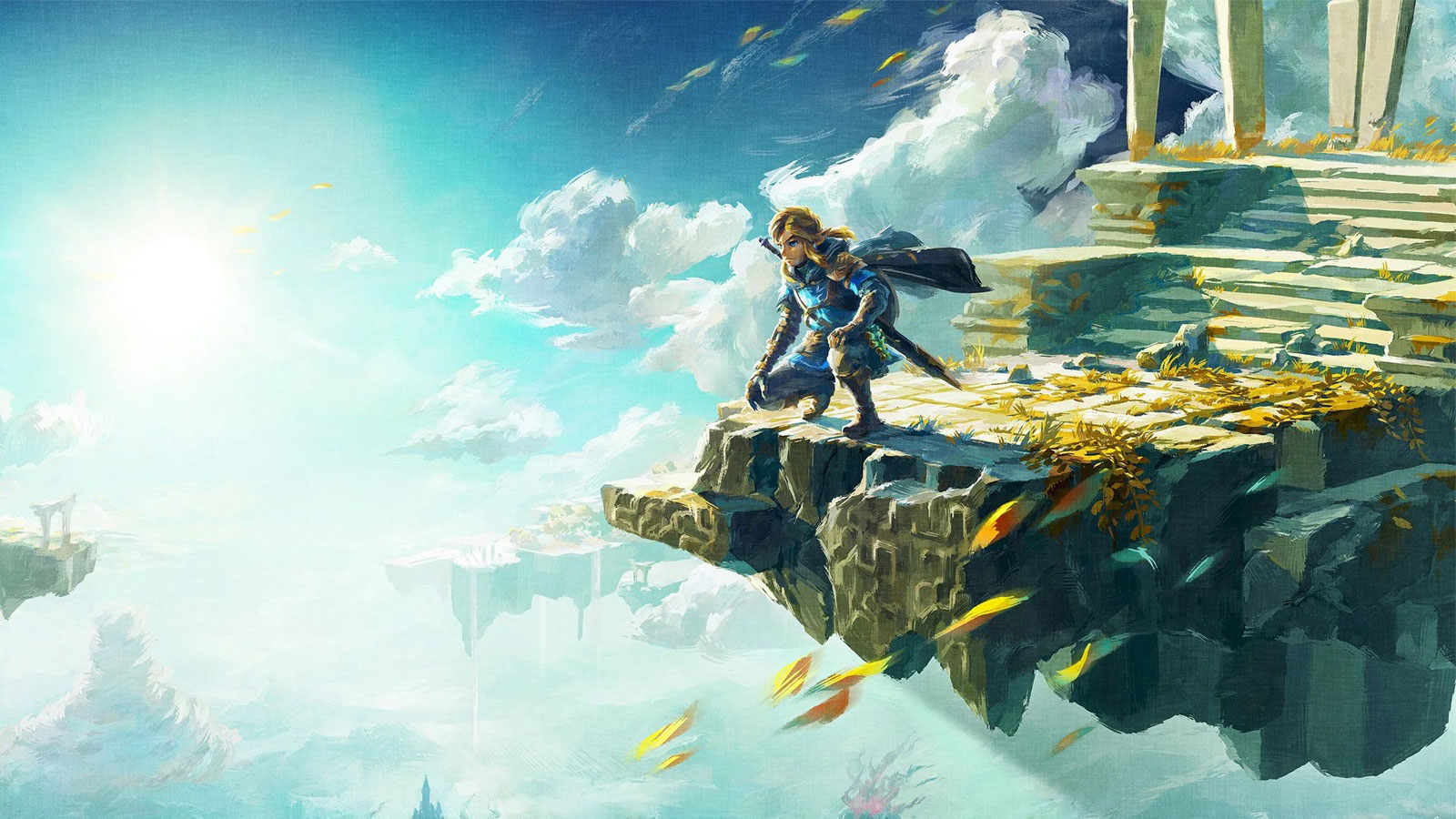Spoiler note: in the interests of protecting your enjoyment, this review will not cover any story specifics, nor reveal any new locations or gameplay mechanics not already made public. This review is spoiler free.
I went into The Legend of Zelda: Tears of the Kingdom expecting something very different.
I saw the pre-release trailers, in particular the early ones setting up the story and tone, and I wondered if Tears of the Kingdom would be to Breath of the Wild what Majora’s Mask was to Ocarina of Time. Majora’s Mask took the existing mechanics and assets of the previous game and remixed them to deliver a radically different vision of The Legend of Zelda; darker and more haunting. In addition, the time loop mechanic had a profound impact on the way Majora’s Mask played; an over-arching, game-wide mechanic that created a clear dividing line between Majora’s Mask and its predecessor. Both games were genius in their own way, but it certainly isn’t accurate to call Majora’s Mask a sequel to Ocarina of Time.
Tears of the Kingdom is not like that – it is absolutely Breath of the Wild 2. It is set in the same location, sees several characters return, lifts (and drops) many core gameplay systems like combat, traversal, paragliding, cooking and more. Fundamentally, the core gameplay loop of these two games is very similar. New mechanics like the Ultra Hand build mechanic do provide an entirely new and wildly inventive way to explore and solve puzzles, but at the very core, Tears of the Kingdom and Breath of the Wild are similar in a way that Ocarina and Majora just weren’t.
I will admit that as I began exploring Hyrule once more, I was a little bummed to see how familiar Tear of the Kingdom felt. Maybe for the first five or so hours I was like ‘oh, ok well. We’re doing it again, I guess. Fair enough’. It wasn’t until I started to properly explore this new rendition of Hyrule that disappointment began to give way to ceaseless awe – and wonderment, and amazement, and the eventual realisation that this world just doesn’t end.
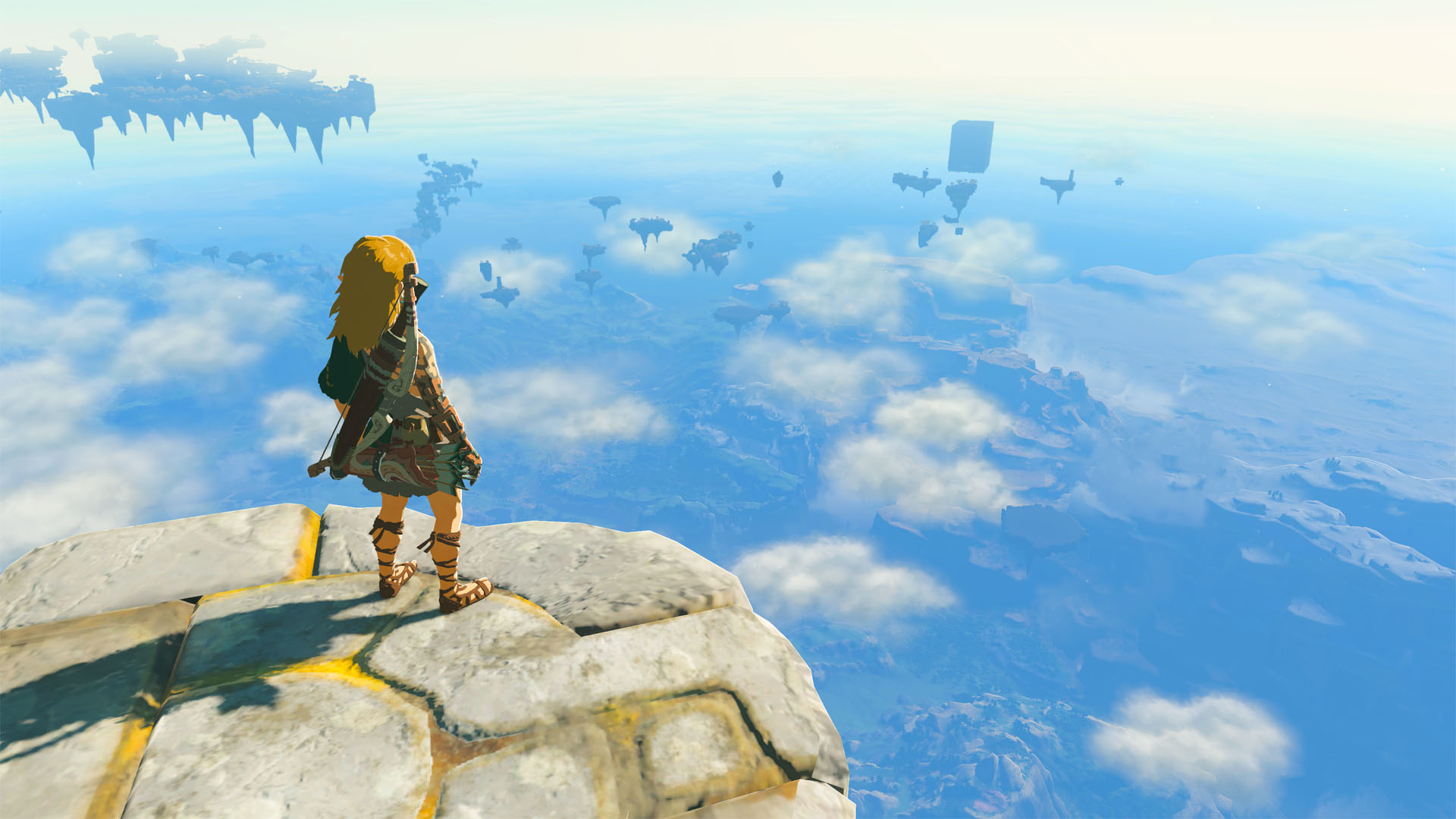
Tears of the Kingdom begins on The Great Sky Isle, which is analogous to the Great Plateau in Breath of the Wild. It is the starting zone that serves as the game’s tutorial, introducing you to the game’s core systems like movement, climbing, combat and resource gathering, as well as the newly added abilities like weapon fusing and the Ultra Hand building system. It’s a testament to the scale and density of Tears of the Kingdom that I spent at least three hours in just this tutorial zone, experimenting with all the new tools at my disposal and exploring every nook and cranny I could find.
Eventually, though, you’re pushed from the nest and as Link makes landfall the Kingdom of Hyrule sits before you, recognisable in many ways but very different in others. One thing that looks pretty familiar is that Hyrule Castle isn’t in great shape. It’s once again covered in ominous-looking goop, only this time it’s floating in the air. To make matters worse Princess Zelda is missing and you immediately have a quest marker pointing you toward the first location that may hold clues to her whereabouts.
Structurally, Tears of the Kingdom is quite similar to Breath of the Wild. There is that over-arching objective to save Zelda and Hyrule, but the path you chose to take toward that objective is entirely up to you. As with almost every Zelda game prior, there are different regions of the map, each populated by different races and tribes, each of them in crisis owing to the same events that see the castle in ruins and Zelda missing. By helping to solve these regional problems, Link will gain valuable allies in his final battle with the evil that plagues Hyrule.
Key to the game’s structure is freedom, and it cannot be overstated the degree to which you can forge your own path. You can immediately begin tackling the main quests in your Adventure log, or you can just…not. You can go and explore any corner of the map. Any cave you find. You can find a way back up to the Sky Isles and start exploring those. You can go to the deepest, darkest, most dangerous reaches of Hyrule from the very second you hit the ground. It is a degree of freedom that few games would ever have the courage to offer, but it is offered here in Tears of the Kingdom just as it was offered in Breath of the Wild.
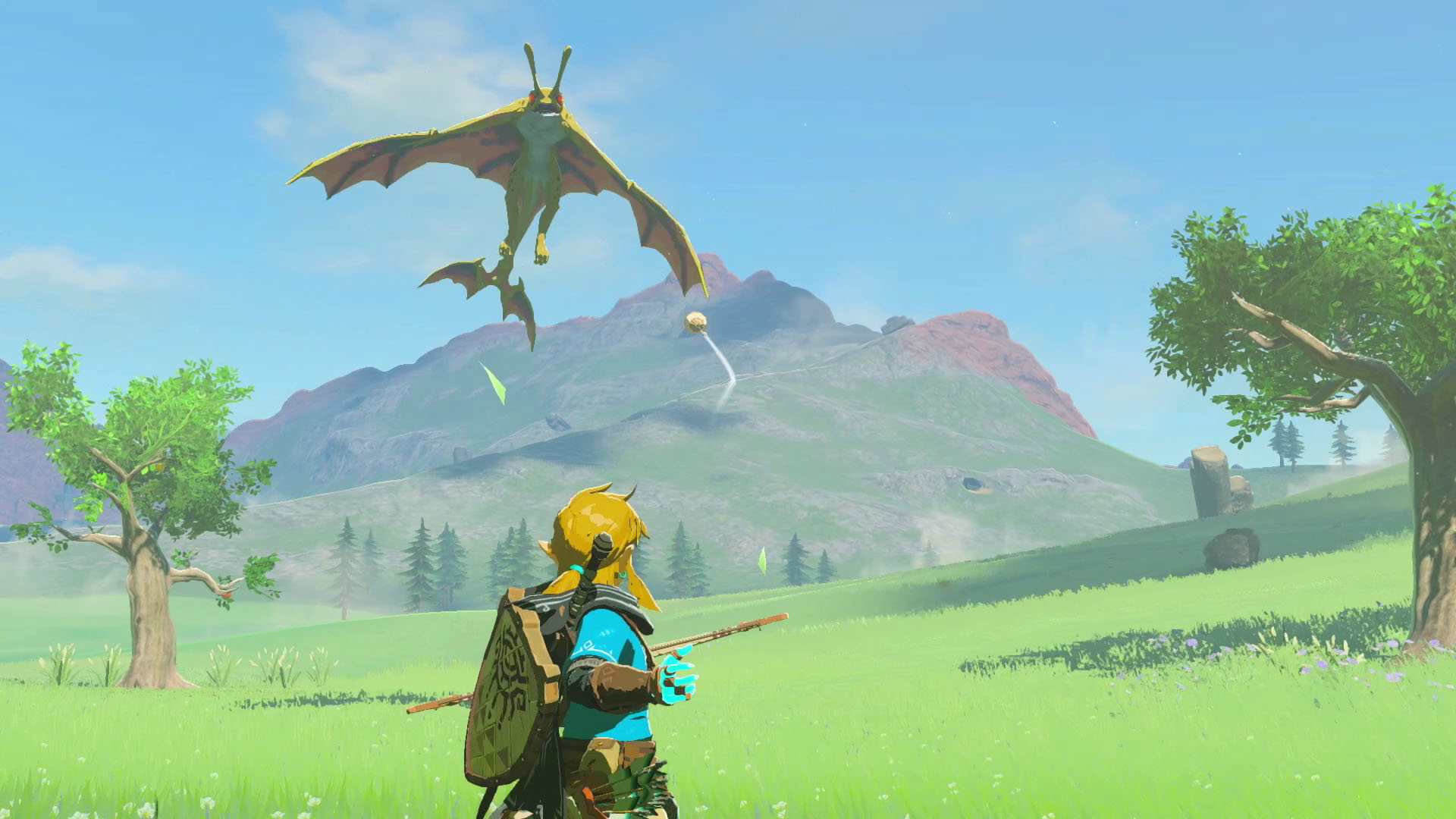
As you begin to explore Hyrule you start to get a sense of just how different this rendition of it is versus what you might have experienced in Breath of the Wild. So much of that game was about moving through massive spaces, discovering old, abandoned ruins that might look impressive but there wasn’t much you could do with them. In Tears of the Kingdom, you can strike out in any direction you like and in no time at all you will find *something*; a combat challenge, an enemy base, a dynamic world event that sees allied factions raiding a monster cave, an NPC offering a side quest, a lake with a little island in the middle and a conveniently placed pile of building materials stacked nearby, subtly hinting that you may want to build a raft and go take a look. Mind you, that’s just what’s on the ground when above you there is this elaborate archipelago of floating islands, each of them their own space to explore full of puzzles, secrets, treasures and more. The density of this Hyrule is truly overwhelming and makes the Hyrule of Breath of the Wild look positively barren by comparison.
Narratively, Tears of the Kingdom delivers its story in much the same way that Breath of the Wild did. It’s still about watching cutscenes of events happening elsewhere, while Link is out there scurrying about on mountaintops. It’s a less potent form of storytelling since it lacks urgency, but the story itself is more powerful this time around. Regardless, the storylines of Zelda games have never been nearly as powerful as the stories that we write as we lead Link on his journey, and no Zelda game prior to this has provided such an incredible tapestry on which to transcribe our own epic. The characters you’ll meet and the problems you’ll solve for them are going to impress you, but they don’t hold a candle to the relentless sense of possibility and discovery that await you every time you step off that main path and into the unknown.
It is no exaggeration to say that no other game has given you a sandbox this flexible, this responsive and this breakable
The defining characteristic of Tears of the Kingdom is not its expansive world or mythic questlines but rather its sandbox. It is no exaggeration to say that no other game has given you a sandbox this flexible, this responsive and this breakable while still being an actual video game rather than a sandbox-style experience like Gary’s Mod. Much of this is centred on the game’s four new abilities: Recall, Ascend, Fuse and Ultra Hand.
Recall is very clever – it rewinds the motion of almost any non-living thing. Time around that object continues to flow forward but the object flows backward. It has its uses in exploration and combat, but Recall is actually most useful as a sort of ‘undo key’, since you’re going to spend so much time building stuff in this game and a lot of that stuff can fall off cliffs or start rolling away from you unexpectedly. Recall allows you to catch them before they’re gone for good.
Ascend is an ability that lets you go up through ceilings, through cave roofs, through platforms, through almost anything. If it’s a flat surface and it isn’t too far above your head, you can use it to push up and through to the level above you. Its application in exploration is obvious; areas that looked completely inaccessible now become very accessible so long as you can get underneath. In combat, it allows you to change elevation quickly and is even used in a number of boss encounters where the boss puts themselves beyond reach but for your ability to Ascend up to them.
Fuse is an ability that lets you combine items to your melee weapon, your shield, or your arrows. The ability to Fuse elementally charged substances to your weapons will give you instant access to a sword that freezes, arrows that set things on fire, and electrically charged shields that will shock any enemy that strikes you, just to name a few potential fusions. Many foes have elemental weaknesses and if you find yourself in the lava zone fighting lots of lava enemies, just create a water sword by fusing some Blue ChuChu jelly and a rusty broadsword you find lying around. The results will impress you (your foes will be less enthused).
As exciting as all of these abilities are, they are just the entrees. So now it’s time for the main course: Ultra Hand, where things start to get really crazy. Ultra Hand lets you pick up and connect things together. Put two logs together side by side and you have a raft. Put two logs on top of each other and you have a really long log. Put 5 logs together and you can pretty easily get places that were probably meant to be much harder to reach.
It is mind-boggling what you are able to do with this ability at any moment, creating all manner of basic structures that allow you to explore and solve puzzles with a degree of creativity that just seems absurd. It becomes even more ridiculous when you begin combining raw materials with Zonai devices, which are mechanical contraptions like flame throwers, batteries, wheels, steering sticks and more. Suddenly you can create boats, hovercrafts, off-road 4-wheel drives, aeroplanes, hot air balloons, motorcycles and more. With so much freedom to build contraptions that can take you anywhere, it’s no longer about ‘what can I do?’ but rather: ‘what do I want to do?’
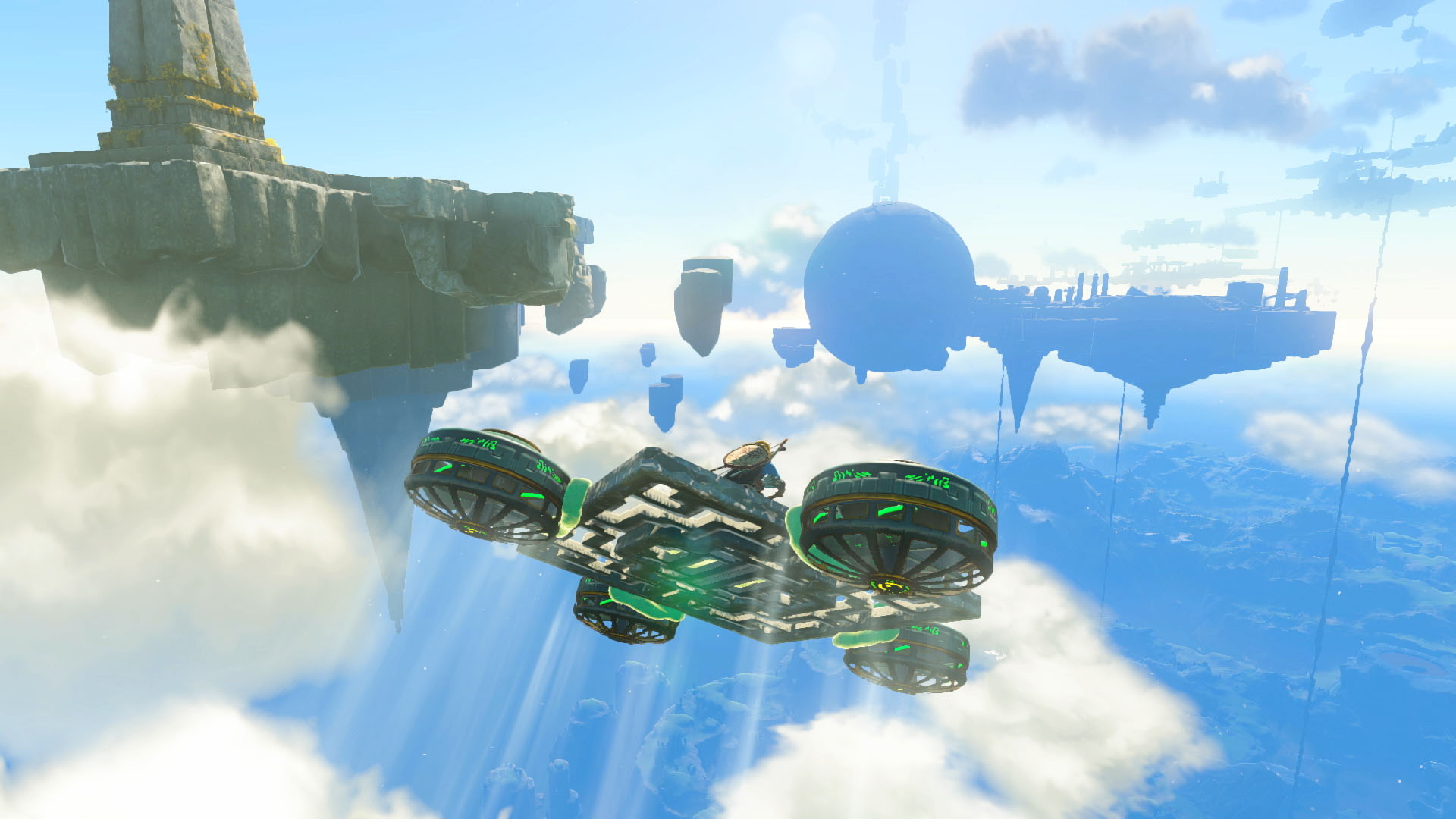
Anyone who’s played a recent Switch release will no doubt be wondering about performance since a number of those releases have highlighted the wrinkles in Nintendo’s aging hardware. So how bad is it? The good news is that by and large, Tears of the Kingdom runs pretty well and maintains an overall solid frame rate. It’s a decent 30 fps most of the time. You will absolutely see frame drops, particularly when building and when a lot of particle effects kick in. In addition to that, there are certain parts of the game where the frame rate collapses, conjuring up memories of Blightown from Dark Souls back in the day. It’s not that bad, but it is in that territory where you’re like ‘oh dear’.
Would it be nice if those things didn’t occur and Tears of the Kingdom ran at a solid 30, or a buttery smooth 60? Absolutely of course, and I’m sure many people will fixate on that over the coming days. But minor frame drops are not the technology story that we should be telling when it comes to Tears of the Kingdom. The real story is: how the hell did Nintendo get this game to run this well on the Nintendo Switch?
This is a beautiful looking game. Its draw distances are some of the farthest of any open world game you will play. In an instant you’re able to shoot high up in the sky to survey a massive stretch of the world beneath you, able to clearly identify so many landmarks from a tremendous distance. There are no loading screens at any point (except when booting up cutscenes) and you will not believe this, but it is true: the total install size for this video game is 16GB. 16GB is the size of a save file for most AAA games these days. Nintendo got this extraordinary game running on a 10-year-old chipset, on hardware thinner than a small stack of beer coasters, in a device I can fit in my back pocket, and it only takes up 16GB of hard drive space? Tears of the Kingdom is a technological miracle, and that is the story that deserves to be told far more than the occasional frame drop. It is clear that this is the Nintendo Switch’s swan song, and this is going to be one hell of a way for this beloved handheld to go out.
Nintendo got this extraordinary game running on a 10-year-old chipset, on hardware thinner than a small stack of beer coasters, in a device I can fit in my back pocket, and it only takes up 16GB of hard drive space? Tears of the Kingdom is a technological miracle
Performance issues aside, there are other things that may stop you from falling under Tears of the Kingdom’s spell. Certainly, one issue that many people will have with it is that it doesn’t go far enough to address the criticisms of Breath of the Wild. In fact, in some instances, it actually takes those grievances and makes them worse.
Combat was never great in Breath of the Wild and it’s equally middling here in Tears of the Kingdom. The fundamentals of combat have been pulled over from the previous game – weapon swings and combos, weapon types, charge moves, bow attacks, the dodge mechanic etc. It’s all back and none of it has been enhanced. Each combat encounter still feels like this awkward dance with your foe where you both take turns swinging at each other with these very stilted animations and little in the way of hit feedback. Given how deep and flexible Tear of the Kingdom’s mechanical sandbox is, its combat feels very one note and unsophisticated by comparison.
It’s made worse by the tuning of things like weapon durability and enemy damage output. Weapons still break very quickly in Tears of the Kingdom, with the Fuse system doing little to improve their durability. Fusing also adds extra steps to the weapon management process, forcing you to go into your inventory to find a weapon, equip it, open a different inventory screen, scroll to a thing you want to Fuse, drop that thing on the ground, open up the abilities menu, select Fuse, and then press Y to Fuse it (making sure you don’t accidentally fuse something else laying on the ground because the process is not reversible).
If that sounds like it sucks, it’s because it absolutely does, and it’s a real mystery why Nintendo seems so intent on not only sticking with a system that many don’t enjoy but doubling down on it in ways that are sure to add insult to injury.
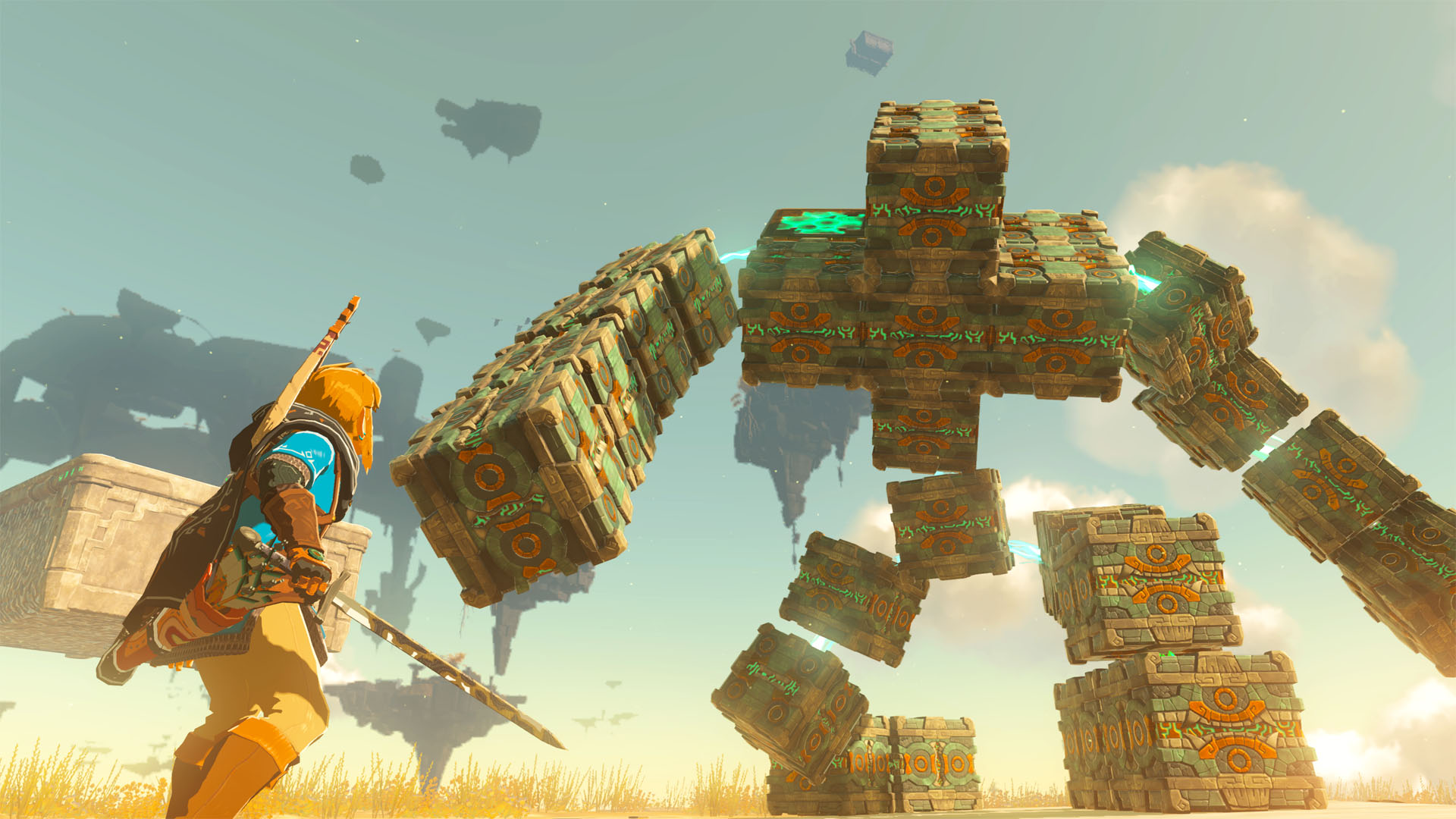
Enemy damage output is also not dialled in correctly. My playthrough was a meandering one: I did lots of shrines, I upgraded some gear, and I wore items that buffed defensive stats. Even then, I would regularly encounter normal enemies who would just two shot me. It’s obviously intended to get people taking combat more seriously, but it just doesn’t feel right, and it pushed me to the game over screen far more than I would have liked.
It also saps my supply of food and if there’s one thing that still sucks it’s the way you prepare meals. You collect the food, you go into your inventory, select the ingredients, hold them in your hands, toss them in a pot, wait for the animation to play out, close the popup, re-open your menu and do it all again. There is no way to quickly cook more than one item. There’s no cookbook that automates the cooking process. It’s very annoying to be honest. You really put it off for as long as you can because needing to stand there for 10 minutes to cook a new batch of food is not fun. Again, Nintendo have put so much work into so many other parts of this game, the decision to leave the entire cooking system like this is obviously a choice, but I am unsure what they think this adds to the experience.
These are some of the more pertinent examples of bugbears from the first game that return here in Tears of the Kingdom, and they speak to that point that I made earlier – this is Breath of the Wild 2. It is a bigger and better version of it to be sure, but the core game is still very much there. I do think that Nintendo could have gone further to buttress some of its weaker systems, like combat, or smooth out some of its more onerous survival elements, but clearly Nintendo does not agree. As a result, there are sure to be plenty of people who want to like this, but just as with Breath of the Wild, they won’t be able to get past all these little frustrations that slowly pile up over time.
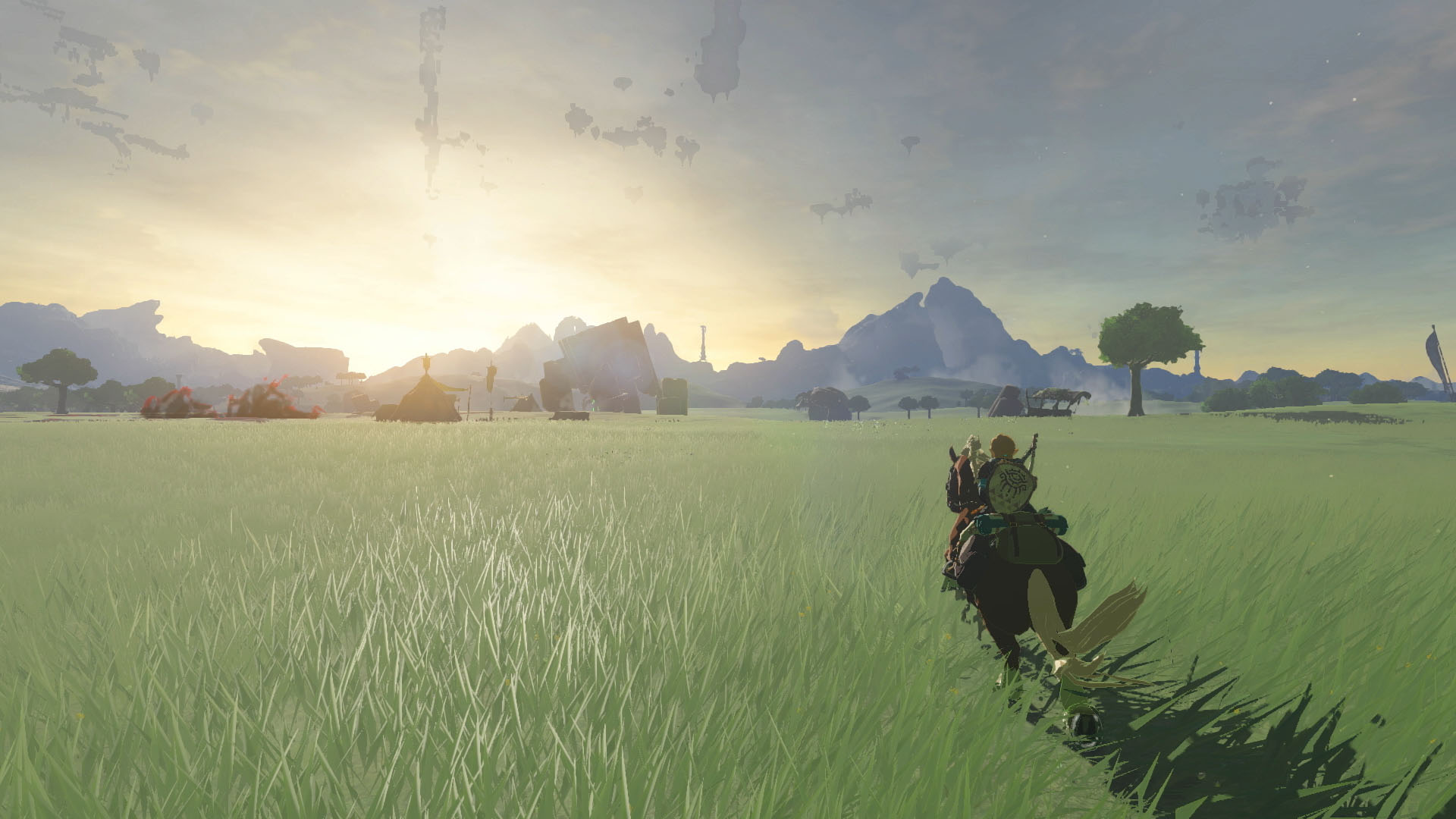
Final Thoughts
With complaints about core elements like performance, combat, quality of life and more, you wonder why it is that we (and likely a number of other publications) are scoring Tears of the Kingdom a perfect ten out of ten.
Firstly, you should know that there’s a great deal about this game that this review has not discussed so as not to spoil these elements of the game. Some of these things are Tears of the Kingdom’s most inspired elements, but far better that you discover them for yourself than read about them here. Secondly, a perfect 10 has never meant a perfect game. Rather, it speaks to one or more elements being so standout, so breakthrough, so powerful and so affecting that they recontextualise any complaints one might have about the broader experience.
The fact, this is easily one of the most sophisticated video games ever created. This sandbox, how this works – I don’t know how Nintendo has pulled this off. I just don’t. It is such a unique offering, and it will remain unique for a long time to come. You can easily recreate the vibe of these modern Zelda games – space, grass, a bit of piano in the background and you’re halfway there. Similarly, you can easily create a game as big as this. Many developers have done so and will do so again in the future, but I can’t see anyone recreating this sandbox anytime soon. The effort and cost it would take to recreate this would be beyond the reach of almost any studio, any publisher, including the big ones. We better enjoy Tears of the Kingdom because we’re not getting another game like this for a very, very long time.
Luckily, there is plenty of Tears of the Kingdom to enjoy. The scale of the world feels infinite, and the ways you can interact with it feel equally infinite. From a replayability perspective, no two playthroughs of Tears of the Kingdom would ever be remotely the same. Hell, even the ways that two people solve the same puzzle aren’t likely to be remotely the same; such is the strength of the tools that Tears of the Kingdom provides, and the resilience of this world to withstand them.
Reviewed on Nintendo Switch // Review code supplied by publisher
Click here for more information on WellPlayed’s review policy and ethics
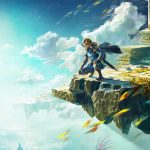
- Nintendo
- Nintendo
- Switch
- May 12, 2023

Ralph 'Skill Up' Panebianco is an Australian-based videogames commentator who couldn't hack it in print, so he had to turn to the lowly, scummy, under-handed world of YouTube. There he scratches out a living dolling out lukewarm takes like 'does everyone agree Fallout 76 bad?', while trying to surreptitiously convince people that Destiny 2 is good (it isn't).




